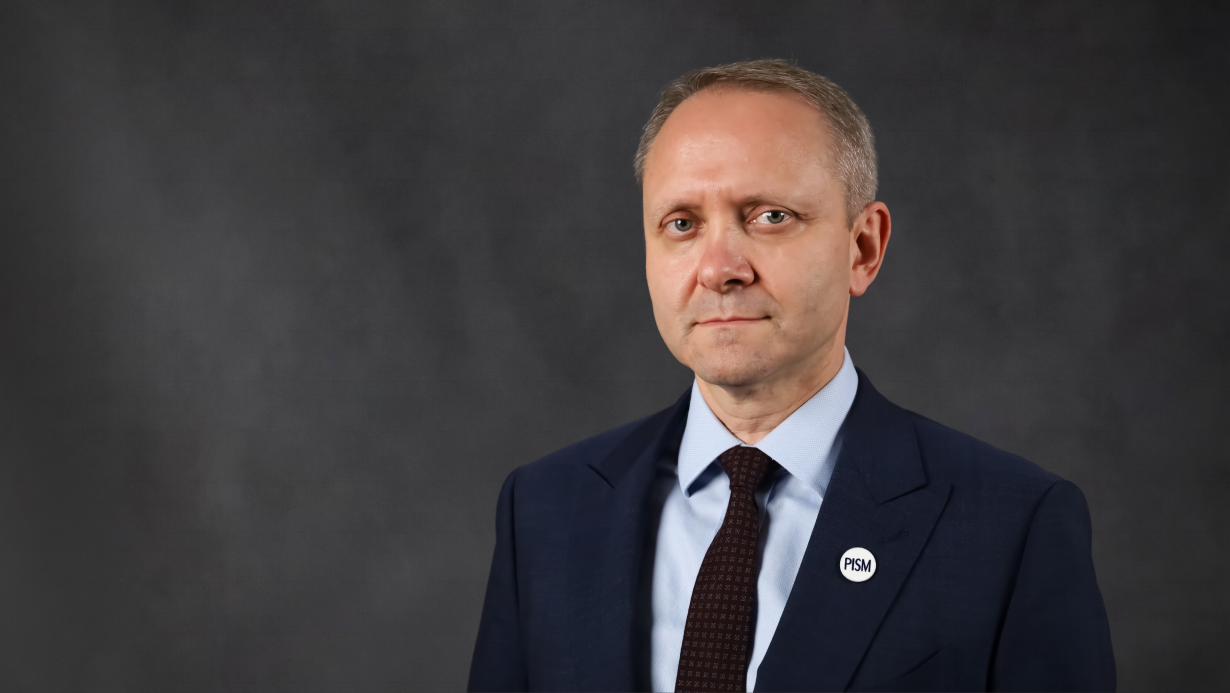NATO Takes on Ukraine Funding at Its Washington Summit
The decisions approved at the NATO summit in Washington (9-11 July) increase the chances for the continuation of military support for Ukraine in the long term. The Alliance also took a step towards developing a strategy that could better prepare it for future negotiations with Russia on the post-war European security architecture.
.png) Nathan Howard / Reuters / Forum
Nathan Howard / Reuters / Forum
How did NATO strengthen its deterrence and defence capabilities?
The Allies are trying to accelerate the development of their military potential and fill gaps in the capabilities of European countries. This applies in particular to munitions, air and missile defence systems, and long-range strike capability. They pledged to increase the capacity of their defence industries and committed to prepare the necessary plans. They also signed several agreements on the development and purchase of weapons. France, Germany, Italy, and Poland, among others, announced joint investments in ground-launched cruise missiles with a range beyond 500 km. The U.S. and Germany announced that in 2026, the U.S. multi-domain operations brigade stationed in Germany will be equipped with long-range missile systems, including hypersonic missiles, SM6s, and Tomahawk missiles. Such systems will enable, among others, attacking targets on the territory of Russia and Belarus. It will be more difficult for Russia to use its numerical advantage in non-strategic nuclear weapons in Europe to intimidate the Alliance (Russia has about 2,000 such warheads, while NATO has about 150 U.S. nuclear bombs stationed in Europe under nuclear-sharing arrangements). The final declaration also included a statement that Russia is a long-term threat to NATO and the Alliance is determined to constrain and contest its aggressive actions. The Allies are to prepare recommendations for the next summit on a strategic approach to Russia. This may be the first step towards a NATO strategy that could assume more active means to influence the Russian perception of threats and create optimal conditions for negotiations on the post-war European security architecture. Adopting such a strategy would make it easier, for example, to develop a common approach to the war in Ukraine, including consent to the use of Western weapons to attack targets on Russian territory or to combat Russian missiles over Ukraine from the territory of NATO countries.
Why has NATO taken responsibility for coordinating aid to Ukraine?
The Alliance is preparing for a possible change in the U.S. approach to the war in Ukraine. So far, military support for Ukraine has been coordinated within the Ukraine Defence Contact Group (Ramstein format) established by the United States. However, there is a risk that if Donald Trump wins the presidential elections in November, this format will be undermined. That is why the Alliance created the NATO Security Assistance and Training for Ukraine (NSATU) mission, de facto for Ukraine to provide it with the necessary defence capabilities and training. The word “mission” is not used in the formal name because some countries believe Russia would cite that as evidence of NATO’s direct involvement in the war in Ukraine. A new command in Wiesbaden will be responsible for implementing NSATU. The Allies also approved the establishment of the NATO-Ukrainian Analysis, Training and Education Center (JATEC) in Bydgoszcz. JATEC can play a key role in supporting the implementation of the reforms necessary for Ukraine’s NATO membership.
What is the significance of the declaration on long-term assistance for Ukraine?
The Alliance is hoping to convince Russia that the scale of Western support for Ukraine will not decrease, that Russia will not achieve its goals by military means, and that it is in its interest to enter into ceasefire negotiations. The allies announced that they would provide Ukraine with support worth about €40 billion within the next year, which has been the average amount of support provided to Ukraine every year since the Russian full-scale invasion. The adopted declaration creates a mechanism for an evaluation of allied contributions. Each country will be able to estimate delivered support by taking into account the value of purchased and transferred equipment, logistics, transport, training, and investments in Ukrainian defence infrastructure and the arms industry. To ensure fair burden-sharing, countries should make at least proportional contributions, including by a measure of their share of Alliance GDP. Twice a year, they will report to NATO on the value of the aid provided and the Secretary General will prepare a comprehensive report. NATO leaders will re-evaluate Allied contributions during subsequent summits. Such procedures will increase political pressure on NATO members to maintain support at the current level. The division of responsibilities based on GDP may also make it easier to put pressure on the U.S. to maintain its support for Ukraine. The GDP of the U.S. constitutes slightly more than half of the GDP of the entire Alliance, and this is also the percentage of American military aid so far.
Has Ukraine moved closer to membership in NATO?
The Alliance strengthened political declarations regarding Ukraine’s future membership, stating that different actions constitute “a bridge to Ukraine’s membership in NATO”. Despite the resistance of some allies, the final declaration includes wording that NATO members support Ukraine on its “irreversible” path to NATO membership. This complements the vague declaration from the Vilnius summit that Ukraine will be a member “when Allies agree and conditions are met”. Despite assurances that it is an irreversible process, there is a risk that Ukraine’s status will be the subject of negotiations to end the war with Russia. However, the strengthened political declarations will make it more difficult for the Alliance members to officially present such proposals. Although Ukraine is not formally closer to membership, it can use practical cooperation mechanisms to more quickly adapt to NATO standards. If the Alliance decides to invite Ukraine, it will have a chance for quick accession, repeating the process of Finland and Sweden.


